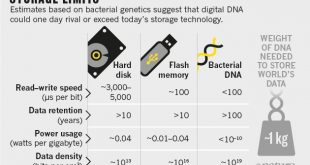Introduction: The New Frontier of Data Processing
In our increasingly data-driven world, traditional computing infrastructure is being pushed to its limits. As organizations across sectors demand faster processing and real-time analytics—especially for remote and data-intensive applications—a revolutionary solution is emerging from an unexpected direction: space. Satellite-based cloud computing represents a transformative leap in data processing capabilities, bringing edge and fog computing to new heights—literally.
This innovative approach leverages spaceborne data centers to overcome the limitations of terrestrial systems. Several pioneering space startups are already integrating micro-data centers into satellite designs, enabling onboard processing of satellite imaging data and distributed sensor monitoring for Internet of Things (IoT) applications. As we’ll explore, this technology promises to reshape how we collect, process, and utilize data across numerous industries.
The Rise of Satellite Constellations and Their Transformative Potential
We are currently witnessing an unprecedented expansion of satellite constellations in Earth’s orbit. These networks of interconnected satellites are poised to revolutionize global communications, Earth observation, and scientific research. Their applications span multiple critical domains:
In telecommunications, these constellations will extend connectivity to underserved and remote communities while supporting the explosive growth of IoT devices that demand robust, ubiquitous communication infrastructure. For weather science and disaster response, they provide real-time monitoring capabilities that can save lives by improving forecasting accuracy and enabling faster emergency responses. The enhanced observation capabilities of modern satellites also allow for detailed monitoring of Earth’s ecosystems, tracking climate change impacts, and studying natural phenomena with unprecedented precision.
Edge and Fog Computing: A Paradigm Shift in Data Processing
The emergence of edge and fog computing represents a fundamental transformation in how we approach data processing and management. These complementary paradigms move computation closer to the data source, offering significant advantages over traditional cloud computing models.
Edge computing involves processing data directly on the devices where it’s collected, whether that’s a satellite, IoT sensor, or other endpoint device. Fog computing extends this concept by creating a local network of devices that can share processing tasks. In the context of satellite systems, edge computing enables data processing onboard the satellite itself, while fog computing allows for distributed processing across constellations of satellites and ground stations.
This approach delivers two key benefits critical for modern applications: dramatically reduced latency and lower bandwidth costs. By processing data closer to its source, organizations can enable real-time decision-making and more efficient data management—capabilities that are becoming essential across industries.
A Hierarchical Architecture for Satellite IoT Systems
To fully leverage the potential of satellite-based computing, researchers have proposed a hierarchical network architecture supported by terrestrial data centers. This cloud-edge stratified system consists of four primary components that work in concert:
The Satellite IoT Cloud Node serves as the most powerful element in the orbital segment, equipped with substantial computing resources to handle complex tasks. Below this, Satellite IoT Edge Nodes provide localized processing capabilities at the network’s periphery. On the ground, User Terminals interface with the satellite network, while Ground Data Centers offer the most substantial computing power and storage capacity, acting as the backbone of the entire system.
This architecture enables flexible, efficient data processing by allowing tasks to be distributed optimally across the network based on their complexity and urgency.
Satellite communication systems are particularly well-suited to benefit from fog and edge computing paradigms. By bringing computing power closer to data sources, these approaches can overcome many of the limitations inherent in space-based systems.
One method of implementing edge computing involves enhancing User Terminals or VSAT (Very Small Aperture Terminal) Terminal Modems with additional computing modules. Traditionally, these terminals consist primarily of modem chips on a board, but modern versions can integrate single-board computers to provide localized processing power. This allows data to be processed near its collection point, reducing the need to transmit large volumes of raw data back to central servers.
An alternative approach connects single-board computers to Ethernet-type Local Area Networks (LANs) equipped with Wi-Fi routers and other short-range IoT connectivity solutions. In this configuration, IoT devices within the network can process data locally, transmitting only essential results or condensed information via satellite communication channels. This optimization significantly reduces bandwidth requirements and latency while maintaining data utility.
In-Orbit Edge and Cloud Capabilities
The number of remote sensing satellites has surged, but traditional architectures often rely on transmitting massive datasets to ground stations for processing. This approach is not only time-consuming but also incurs significant costs, especially when dealing with high-resolution data streams. Embedding artificial intelligence (AI) processors onboard satellites marks a transformative shift in how space data is handled. By processing data in orbit, the need for extensive downlinking is drastically reduced, enabling faster access to insights and significantly lowering bandwidth requirements.
Edge-enabled satellites, particularly those deployed in constellations or swarms—such as CubeSats and ChipSats—can now operate autonomously. These satellites are capable of performing localized data analysis, drawing real-time conclusions, and transmitting only the most critical insights back to Earth. This capability is especially vital in applications where time is of the essence, such as monitoring natural disasters or military surveillance operations.
In addition to enhancing performance, onboard data processing leads to substantial energy and bandwidth savings. This is crucial in space environments where both power and communication resources are limited. However, the road to fully autonomous orbital computing is not without obstacles. High-resolution remote sensing data demands considerable processing power, which is often constrained by the satellite’s size, weight, and energy budget. Fortunately, ongoing advances in lightweight AI chip design and energy-efficient processing architectures are steadily overcoming these challenges, making in-orbit computing increasingly viable.
Satellite-Based Cloud Computing Centers
The concept of deploying cloud computing centers in orbit is rapidly gaining traction, offering a compelling solution to the limitations of Earth-bound data infrastructures. One of the most significant advantages is global coverage. Space-based data centers can provide seamless computing services to regions where terrestrial infrastructure is lacking or unreliable, bridging the digital divide and enhancing accessibility for remote operations.
Another critical benefit is reduced latency. By processing data in space, these satellite-based systems can eliminate the delays associated with round-trip transmissions to Earth-based servers. This is particularly beneficial for time-sensitive applications, such as autonomous navigation, defense systems, and emergency response.
Scalability is yet another key advantage. Orbital cloud networks can be expanded simply by deploying additional satellites or upgrading existing payloads, allowing service providers to dynamically respond to rising data demands or specialized mission needs.
Some of the most advanced implementations currently in development involve geostationary satellites equipped with full-scale data center modules. These platforms leverage high-speed inter-satellite communication links to coordinate with LEO and MEO satellites, while maintaining secure, high-throughput downlinks to ground stations. This hybrid approach maximizes the efficiency and flexibility of satellite-based cloud services, positioning them as a critical component of future global computing infrastructure.
The Challenges of Edge Computing in Space
While the potential benefits are substantial, implementing edge computing in space—particularly in Low Earth Orbit (LEO) satellite constellations—presents unique technical challenges that must be addressed.
The highly dynamic nature of LEO constellations creates significant hurdles. Satellites in these orbits move at tremendous speeds—approximately 27,000 km/h at 550 km altitude—requiring ground stations to constantly switch communication partners. This mobility complicates maintaining stable connections for edge computing applications.
Additionally, the need for hardware uniformity across constellations conflicts with varying regional demands. While satellites are typically identical to ensure consistent coverage, computing needs vary dramatically between densely populated urban areas and sparsely inhabited regions. This mismatch between resource distribution and demand creates inefficiencies in the system.
Technical constraints further complicate implementation. Space-based servers face strict limits on energy consumption, heat generation, and weight, all of which directly impact launch costs and mission viability. Perhaps most challenging is the impossibility of performing maintenance or upgrades once satellites are deployed—any failures are permanent, and capabilities remain fixed for the satellite’s entire operational lifespan (typically around five years).
Satellite-Based Cloud Computing: Advantages and Applications
Despite these challenges, satellite-based cloud computing offers compelling advantages that are driving rapid innovation in the field. Spaceborne data centers, equipped with advanced processors and AI capabilities, function similarly to their terrestrial counterparts while offering unique benefits derived from their orbital position.
The global coverage provided by satellites ensures consistent data availability and processing power regardless of location—a critical advantage for applications spanning remote environmental monitoring to global communications. By processing data in space, these systems can dramatically reduce latency compared to ground-based alternatives, enabling true real-time analytics for time-sensitive applications.
The scalability and flexibility of satellite data centers represent another major advantage. Capacity can be expanded either by deploying additional satellites or upgrading existing ones, allowing the system to grow alongside increasing data demands. This modular approach future-proofs investments in space-based computing infrastructure.
These capabilities enable transformative applications across numerous sectors:
In remote sensing and Earth observation, satellites equipped with powerful AI processors can analyze vast amounts of imagery in real-time, providing immediate insights for climate monitoring, disaster response, and environmental protection. The agricultural sector benefits from timely analysis of multispectral and hyperspectral imagery to optimize crop health monitoring, yield prediction, and water resource management.
Maritime and transportation industries gain enhanced safety and efficiency through real-time analytics for navigation, weather forecasting, and vehicle tracking. Defense and security applications leverage the technology for real-time intelligence and situational awareness. Perhaps most significantly, the growing ecosystem of IoT devices benefits from robust, low-latency data processing that reduces strain on terrestrial networks.
Industry Pioneers and Case Studies
Several innovative companies are leading the charge in developing satellite-based cloud computing solutions, each with unique approaches to the technological challenges.
Florida-based OrbitsEdge is pioneering the integration of commercial off-the-shelf rackmount servers into satellite platforms. Their SatFrame satellite bus features a standardized 19-inch server rack capable of supporting 5U of hardware, with plans to expand to full-sized 36-inch deep hardware in production models. This approach positions OrbitsEdge as both an edge computing solution and space-based data center provider, filling a critical gap in commercial space infrastructure.
LEOcloud has taken a partnership approach, collaborating with supercomputer firm Ramon.Space to develop satellite-based cloud services. Their two-phase strategy begins with connecting ground-based customers to satellite data suppliers through low-latency, high-availability cloud services, followed by the deployment of dedicated satellite-based cloud infrastructure.
Perhaps most notably, Amazon Web Services (AWS) has successfully demonstrated cloud computing capabilities in orbit. In a groundbreaking experiment, AWS deployed compute and machine learning software on a satellite, enabling onboard analysis of Earth observation data. This achievement allows users to process vast amounts of raw satellite data in space, transmitting only the most relevant information to Earth—dramatically reducing bandwidth requirements while accelerating decision-making.
This project, executed in collaboration with D-Orbit and Unibap, utilized AWS ML software to analyze EO data in real time, reducing the need for data downlinks and enabling faster insights. AWS’s approach included the use of IoT Greengrass for cloud integration and TCP/IP proxies for efficient bidirectional communication. Real-world use cases included detecting clouds, smoke, and maritime traffic. This achievement marks a significant step forward in space-based edge computing and highlights AWS’s commitment to expanding cloud capabilities beyond Earth.
TelePIX’s development of the TetraPLEX AI processor represents another significant advancement. This space-optimized processor, developed in collaboration with NVIDIA, delivers an impressive 10 trillion operations per second, enabling sophisticated onboard data analysis. Initial applications focus on climate science, particularly monitoring blue carbon ecosystems and greenhouse gas emissions.
Overcoming Implementation Challenges
While the potential of satellite-based cloud computing is immense, several significant challenges must be addressed to realize its full benefits.
The cost and accessibility of space-based systems remain substantial barriers, though advancements in miniaturization and reusable rocket technology are driving costs downward. Technical complexity presents another hurdle, as developing reliable, energy-efficient data centers capable of operating in space’s harsh environment requires innovative engineering solutions.
Regulatory and security concerns add additional layers of complexity. As space becomes increasingly contested, establishing clear policies and protocols for space-based data processing and transmission becomes essential. Ensuring data security and compliance with international regulations will be critical for widespread adoption.
The Future of Satellite-Based Cloud Computing
As technology continues to advance, satellite-based cloud computing is poised to transform how we process and utilize data both in space and on Earth. The integration of increasingly sophisticated AI and machine learning capabilities with satellite technology opens new possibilities for real-time analytics and decision-making.
This evolution promises to address some of the world’s most pressing challenges, from climate monitoring to global communications. The future of satellite technology isn’t just about reaching new heights in space—it’s about fundamentally transforming how we collect, process, and derive value from data to benefit life on Earth.
As these technologies mature, we can expect to see spaceborne data centers become an integral part of our global computing infrastructure, working in harmony with terrestrial systems to create a truly ubiquitous, responsive data processing network that transcends traditional limitations of geography and infrastructure.
References and Resources also include:
https://datacenterfrontier.com/data-centers-above-the-clouds-colocation-goes-to-space/
 International Defense Security & Technology Your trusted Source for News, Research and Analysis
International Defense Security & Technology Your trusted Source for News, Research and Analysis



